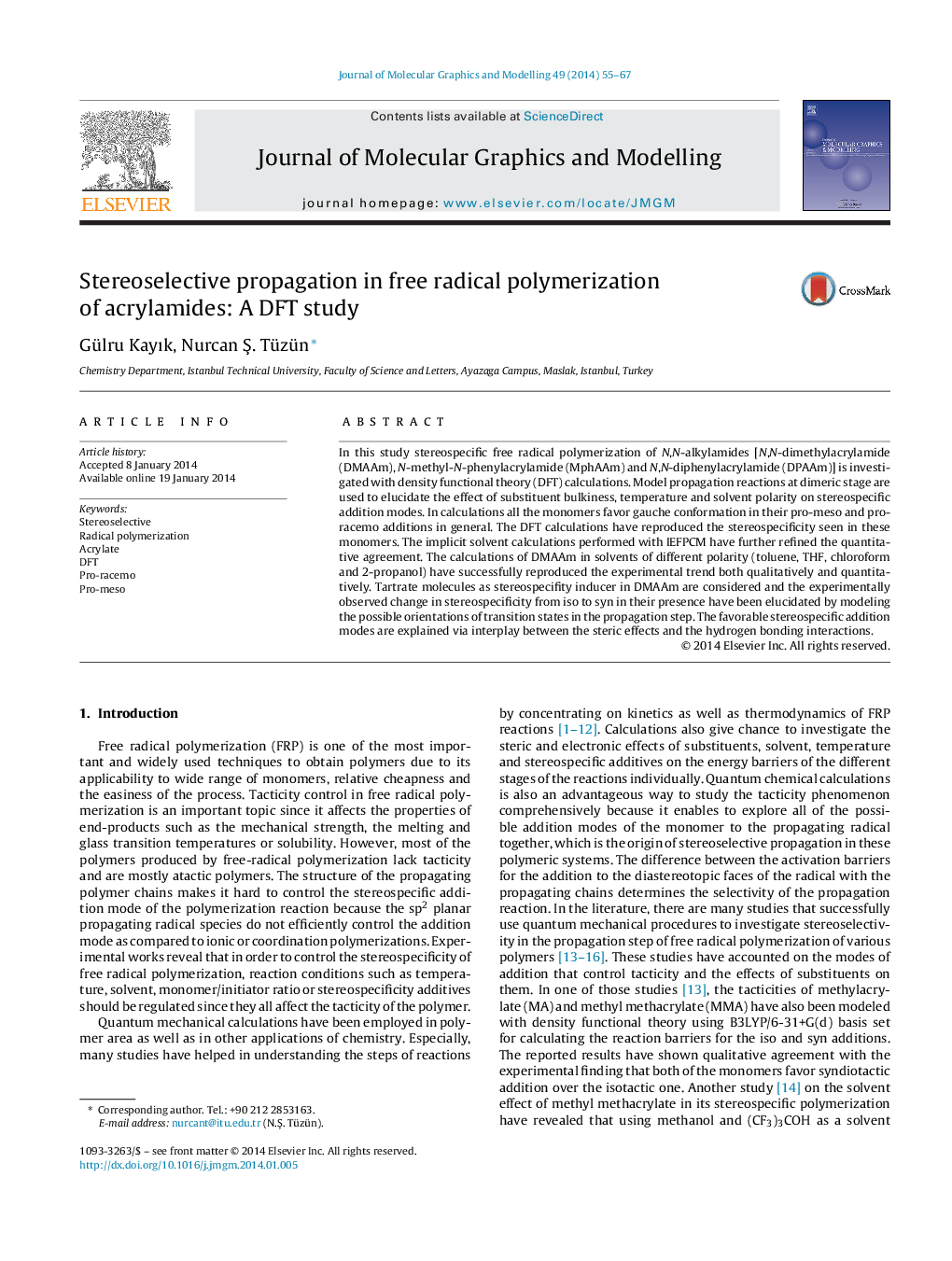| Article ID | Journal | Published Year | Pages | File Type |
|---|---|---|---|---|
| 443586 | Journal of Molecular Graphics and Modelling | 2014 | 13 Pages |
•Stereoselective propagation of acylamides is modeled in radical polymerization.•Temperature and solvent effect is shown on stereoselective propagation.•Stereospecifity is directed by interplay between steric effects and H-bondings.
In this study stereospecific free radical polymerization of N,N-alkylamides [N,N-dimethylacrylamide (DMAAm), N-methyl-N-phenylacrylamide (MphAAm) and N,N-diphenylacrylamide (DPAAm)] is investigated with density functional theory (DFT) calculations. Model propagation reactions at dimeric stage are used to elucidate the effect of substituent bulkiness, temperature and solvent polarity on stereospecific addition modes. In calculations all the monomers favor gauche conformation in their pro-meso and pro-racemo additions in general. The DFT calculations have reproduced the stereospecificity seen in these monomers. The implicit solvent calculations performed with IEFPCM have further refined the quantitative agreement. The calculations of DMAAm in solvents of different polarity (toluene, THF, chloroform and 2-propanol) have successfully reproduced the experimental trend both qualitatively and quantitatively. Tartrate molecules as stereospecifity inducer in DMAAm are considered and the experimentally observed change in stereospecificity from iso to syn in their presence have been elucidated by modeling the possible orientations of transition states in the propagation step. The favorable stereospecific addition modes are explained via interplay between the steric effects and the hydrogen bonding interactions.
Graphical abstractFigure optionsDownload full-size imageDownload high-quality image (177 K)Download as PowerPoint slide
